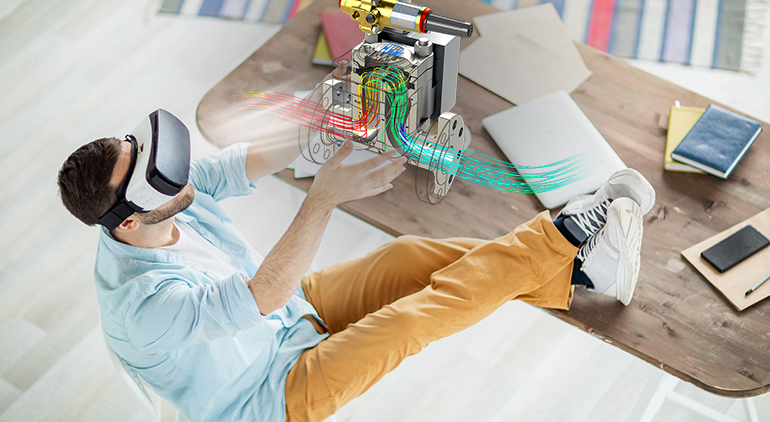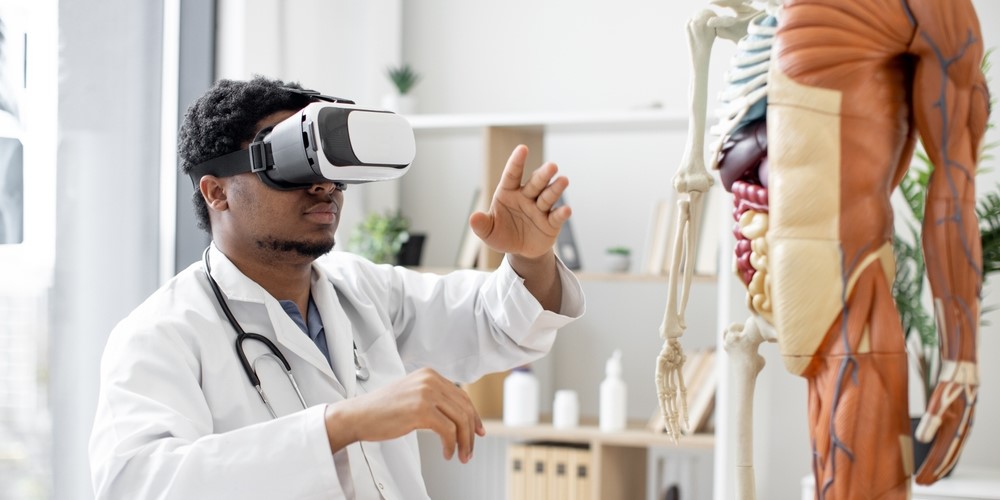Boom of Simulated Labs in STEM Education

The rise of simulated labs meant a supplement for laboratories. But in the wake of the benefits it entails, it might as well be a replacement.
As cutting costs, expanding reach, and enhancing student experience starts to become the driving factors for an institution’s success, the idea of virtual labs is gaining much traction.
Let us take a look at some numbers.
According to MarketWatch, the STEM (Science, Technology, Engineering, and Mathematics) market is expected to exhibit a CAGR of 5% from 2021 to 2023.
Market Reports World predicts a shift in education dynamics as a global lean towards context-based education is observed. Hands-on learning is gaining traction.
The education tech market was at $89.49 Billion in 2020.
From 2021 to 2028. Edtech is expected to reach a CAGR of 19.9%.
From the above observations, we can conclude that there is a significant shift in the global expectations when it comes to education delivery. And no segment is more affected than STEM education.
So why does this point to a boom in the adoption of simulated labs?
The answer lies in the number of problems it addresses. Let us take a look at some of them.
Challenges Solved by Simulated Labs
✔️ Lab Access Limitations
This is characterized by:
High cost of specialized equipment.
Lack of infrastructure in schools.
And more recently, social distancing norms due to the pandemic.
Using virtual reality labs, a vast range of machines and advanced equipment can be introduced to the students. Since it is a one-time investment with negligible sustenance cost, it increases the overall feasibility.
With the opportunity to practice the applications of high-end industry-standard equipment, the students become much more confident during professional practice as well.
"Unlock the Secrets of STEM Success: Learn How Simulated Labs are Redefining Education and Empowering Students to Achieve Their Dreams"
✔️ Student Motivation
Passive and rote learning environments can decrease student motivation and engagement. With virtual labs, the professor is able to immerse the students in a life-like actual application of their theoretical knowledge.
Students are also able to freely experiment and observe the outcomes with no damage done to any apparatuses.
✔️ Complex Topics
It can be an incredibly difficult task for students to wrap their heads around abstract concepts or complex topics. With active visual tools, it becomes simple.
Through VR engineering experiments that can be conducted in a visually stimulating environment, grasping becomes easier. So does the real-world application of it.
Apart from these, simulated labs also allow students to make mistakes in high-risk environments without any consequences. It is also a solution for the limited or decreased lab time that the students get.
Additionally, laboratory ethics when it comes to experiments like dissecting are also addressed efficiently through the adoption of virtual reality in the classroom.
Now the benefits are clear. The solutions are appreciated. And the inevitable boom has been acknowledged. So who all are leading the pack in adoption?
✔️ Use cases of simulated labs
California State University integrated 159 virtual laboratory simulations across its 23 campuses. This helps its STEM faculty to allow students to experience scientific inquiry and discovery.
Touro College reinvented its biology labs to be easily accommodated in the online, synchronous mode of teaching.
By using virtual labs, the faculty was able to let students perform experiments, access models of anatomy, and interact with a wide array of lab equipments.
In an attempt to integrate its courses into the new normal of the pandemic, the University System of Maryland adopted simulated labs.
The university allows students to have access to more than 150 simulations of various lab environments for subjects such as biology, chemistry, and physics.
Related post: Why Universities are Adopting AR/VR Technologies
Middlesex Community College has publicly announced its plans to run 95% of its courses online and one of the attractions will be the integration of simulated labs into the STEM segment.
The abrupt shift into virtual and hybrid learning globally is the catalyst for this widespread virtual labs adoption. The biggest names in the education industry are doing it. What can we conclude from this?
Conclusion
According to PRNews, the online tutoring market is expected to have a growth of $132 Billion from 2020 to 2024.
The growth will be accelerated by a CAGR of 15%.
The increasing importance of stem education and vr ar is a key driver to the growth of the global online tutoring market. As such, innovative integrations such as simulated labs are sure to attract some eyeballs.
With flexible access, instant feedback, high-end equipment, lower costs, and higher efficiency, there is practically no disadvantage for virtual labs. It also instills a sense of security, confidence, and collaboration among the students.
At iXR Labs, we understand the growing prominence of technology in the higher education spectrum. For more such industry-specific advancements in this field, visit us at www.ixrlabs.com.

.png)
.png)



